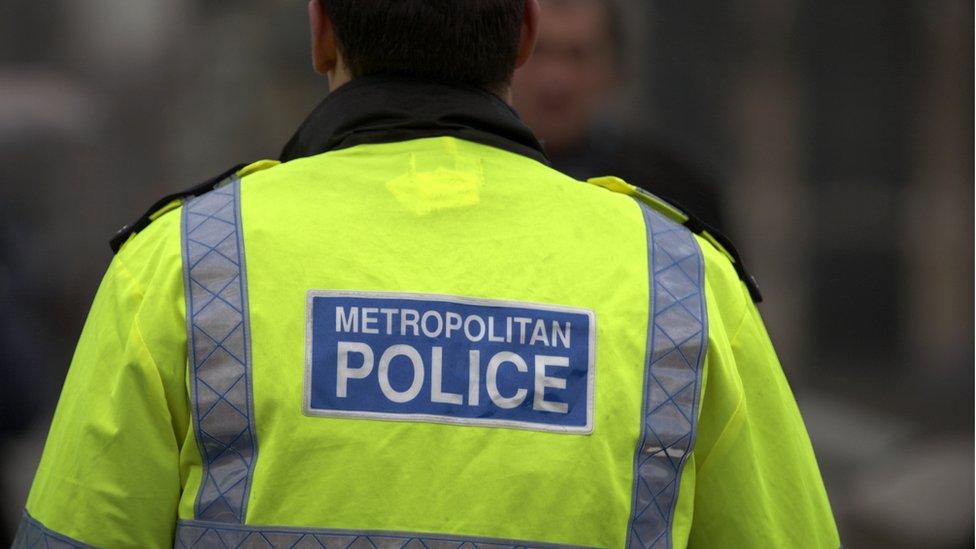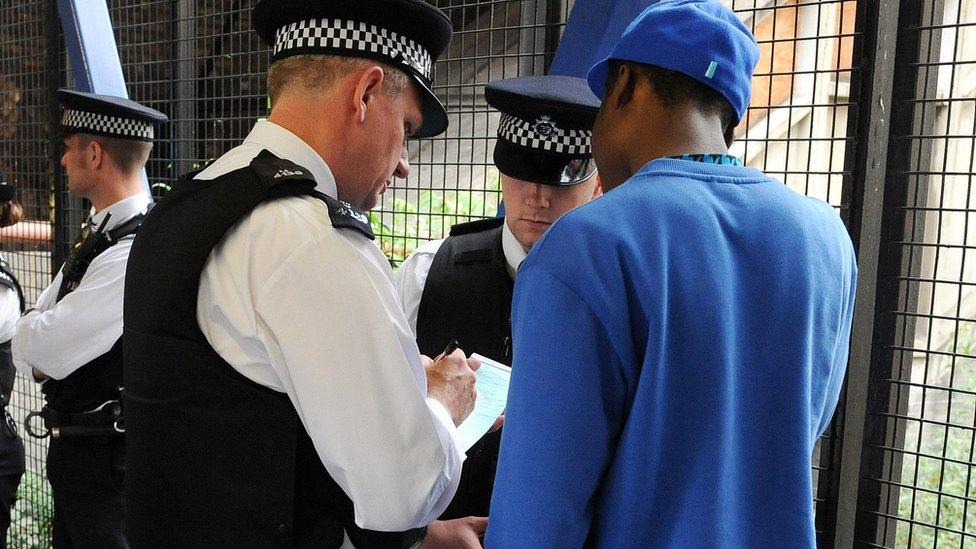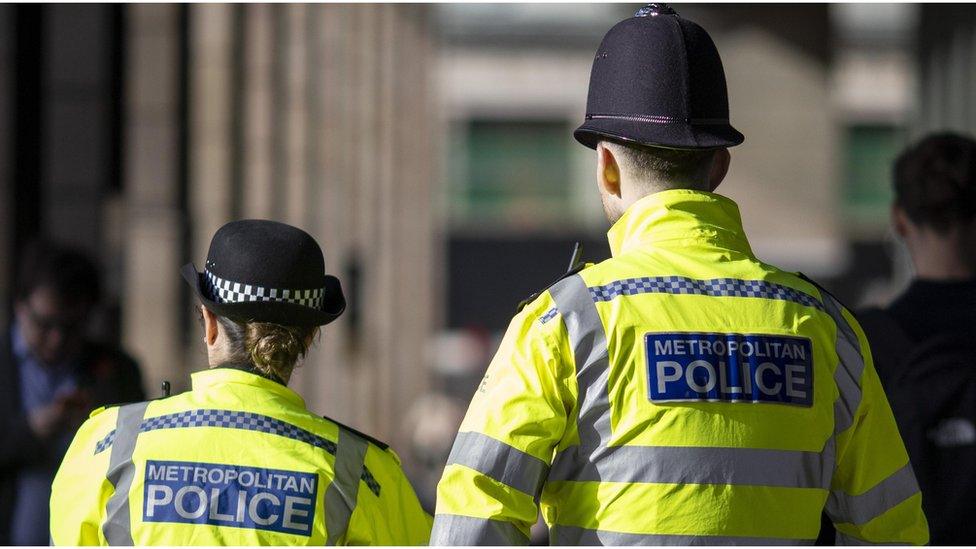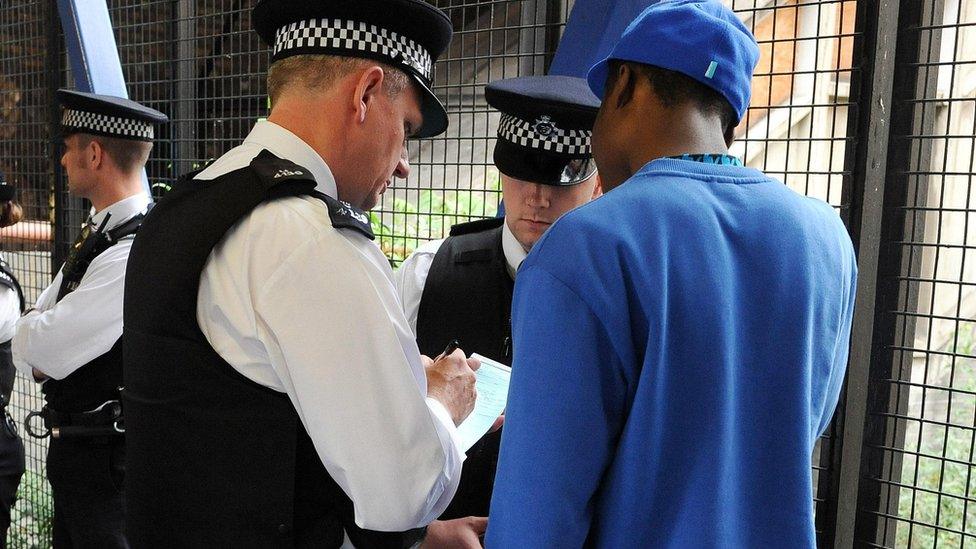Met Police scraps controversial gang database
- Published

The Met said it was taking a more targeted approach to gang-related violence
The Metropolitan Police has scrapped its gangs violence matrix (GVM) after more than a decade over concerns about the scheme's "disproportionality".
The GVM database was used by the Met to identify those at risk of committing, or being a victim of, gang-related violence in London.
It is being replaced by an existing but "adapted" violence harm assessment (VHA), the force said.
Mayor Sadiq Khan said Londoners would "judge this new approach on results".
"The Met has reached an important decision to move to a new more targeted approach to dealing with violence in the capital," Mr Khan said.
The GVM was set up in 2012 as a response to the London riots the previous year, and the Met has repeatedly described it as a crucial tool to prevent gang violence.
At its peak in August 2017, there were 3,881 people on the database.

Young black men were disproportionately represented in the matrix
Following a legal challenge from the charity Liberty in 2022, the Met agreed to remove the majority of individuals from the GVM and, if asked, to inform people on the database who their data has been shared with and what that data is.
Liberty, which was acting on behalf of musician Awate Suleiman, argued the database discriminated against black people, who were disproportionately represented on it.
The challenge came after Mr Suleiman wanted to know if he was on the list and it took the Met two years to respond to his inquiry.
He was eventually told the force "could neither confirm nor deny" his status.
Only after the legal challenge did Mr Suleiman discover he had never actually been on the database.
In October 2022, the Met agreed to overhaul the system, with the force now deciding to move to a different scheme altogether.
Assistant commissioner Matt Twist said: "We have listened to the concerns about disproportionality on the gangs violence matrix and have spent the past year engaging with community members and relevant stakeholders, to ensure we have complete transparency about our new approach to tackling the most violent and harmful offenders in London."
A Met spokesperson said the violence harm assessment would "complement" the force's ongoing work by identifying violence linked to increased gang tensions.
They said gang-crime would now be treated to the type of "precision-led policing" currently used to identify the "most dangerous and violent sexual predators".
Jude Lanchin, a senior associate in criminal defence at Bindmans LLP - which previously represented some of those on the database - said she welcomed the news.
"The GVM discriminated against and heavily impacted young black men in particular, in all areas of their lives such as housing, education, benefits, employment and driving, even if they had never actually been arrested or committed an offence," she said.
"For those who did find themselves in court, the 'gang narrative' was often used by the prosecution to negatively sway juries; however, defence lawyers were denied crucial information to mount proper challenges to these assertions and defendants were therefore often denied the right to a fair trial."
She added despite the progress made in scrapping the database, she was "very concerned that the racial discrimination embedded in the GVM" would remain in the VHA tool.

Follow BBC London on Facebook, external, Twitter , externaland Instagram, external. Send your story ideas to hellobbclondon@bbc.co.uk, external
- Published12 November 2022

- Published9 May 2018
